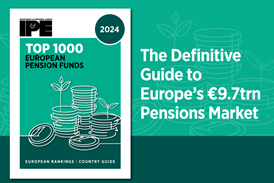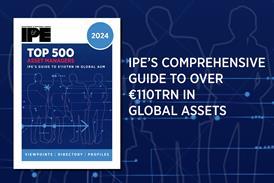The Partnership for Carbon Accounting Financials (PCAF) has suggested harmonising carbon accounting rules for corporate bonds. The alliance of financial institutions has proposed a use-of-proceeds structure.
PCAF made this suggestion in a consultation document on its website, which was open for input until Friday last week. The proposal would allow investors to account for the specific CO2 emissions of each individual bond they own, proposing an approach whereby the use of the proceeds from a bond issue determines the carbon footprint of this investment. If issuers do not report the required carbon emissions data separately, an estimation approach can be used.
The new suggested approach can be used for all bonds, though it is probably most welcome for green bonds, according to Jorg Soens, senior ESG solutions specialist at Insight Investments.
“Currently, the emissions intensity of the green bond index is higher than that of an index with only conventional bonds. This is because most issuers of green bonds are utilities that are in the process of transitioning towards renewables but still use a lot of fossil fuels,” he explained.
Some investors, including Dutch fiduciary manager Achmea Investment Management, have for this reason considered green bonds emissions-free so far.
Sense
It “doesn’t make any sense” if the carbon footprint of a green bond is higher than the footprint of a conventional bond, Soens noted.
“The new guidance targets what we wanted to see. A big portion of our clients have the aim to decarbonise their portfolio, and therefore want to see the real emissions of their green bonds, and how much of existing emissions these bonds help to avoid,” he added.
It remains to be seen, however, whether companies will start to report emissions data for separate bond issues.
“Ideally what we would want is that issuers see it as an opportunity for their green bonds, to show investors how they can use green bonds as an instrument to lower their carbon footprint,” said Soens.

If granular emissions data are not forthcoming, investors can estimate emissions using emissions databases and linking these to the projects that are to be financed by the green bonds.
When it comes to renewable energy, most emissions will fall under scope 1, while most fossil fuel emissions are scope 3. For solar farms, for example, emissions are concentrated in the mining of commodities such as lithium and other inputs for the production process, as well as clearing land on the installation site.
Offshore wind
The various forms of renewable energy have different emissions profiles. While solar farms have a relatively low carbon footprint, offshore wind farms are the most carbon intensive, according to Soens, because of the resource-intensive construction phase and the long undersea network cables needed to connect the wind farms to the electricity grid.
“In short, it is very carbon-intensive to build on sea beds,” he noted.
So far, investors have used a variety of methods to calculate emissions from green bonds. While some investors have treated green bonds as emissions-free, others have treated them the same way as conventional bonds.
While PensionsEurope, the European branch organisation for pension funds, said it has “not worked” on the PCAF consultation, some pension investors have.
Achmea Investment Management said in a written response to questions from IPE that it welcomed the standardisation effort. “In general, we expect standardisation in green bond impact reporting to increase, making information provided by issuers more useful for investors,” it said.
Wilfried Bolt, investment manager fixed income at Dutch pension investor PGGM, said he “sees the logic” of the PCAF proposal to relate the emissions of bonds to the actual investments made with the proceeds of this bond.
“We are looking with interest at how this PCAF consultation is received by the market, and whether green bond issuers will publish the relevant data,” Bolt said.
The latest digital edition of IPE’s magazine is now available























No comments yet